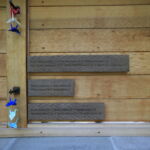Bainbridge Island Japanese American Exclusion Memorial
Project's Summary
The Bainbridge Island Japanese American Exclusion Memorial stands as a testament to the resilience and strength of a community that faced adversity during World War II. This memorial, designed by EDX Exhibits in collaboration with the Bainbridge Island Japanese American Community, Seattle architect Jones and Jones, and artist Steve Gardner, serves to honor the 276 Japanese Americans who were forcibly removed from their homes due to Executive Order 9066. Located on a historically significant site, the memorial marks the path that these individuals walked to the dock, where they boarded ferries bound for their eventual incarceration at Manzanar and Minidoka.
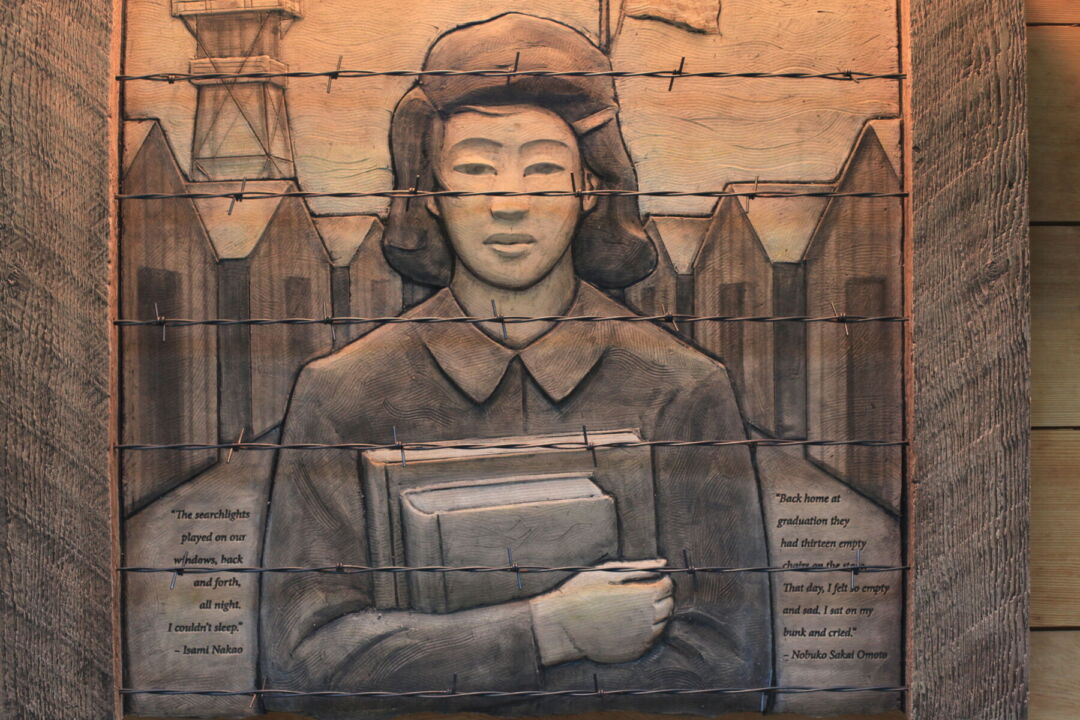
The interpretive experience of the memorial wall is thoughtfully designed to evoke reflection and remembrance. As visitors traverse the wall, they encounter a series of friezes that tell the story of the Bainbridge Island Japanese American community. These friezes illustrate their roles as farmers, millworkers, teachers, students, and neighbors, providing a glimpse into their lives before the forced relocation. The understated design of the friezes gradually unfolds the narrative of their removal and subsequent incarceration, culminating in the eventual return of 150 individuals to the island. This careful storytelling allows visitors to engage deeply with the history and experiences of the community.
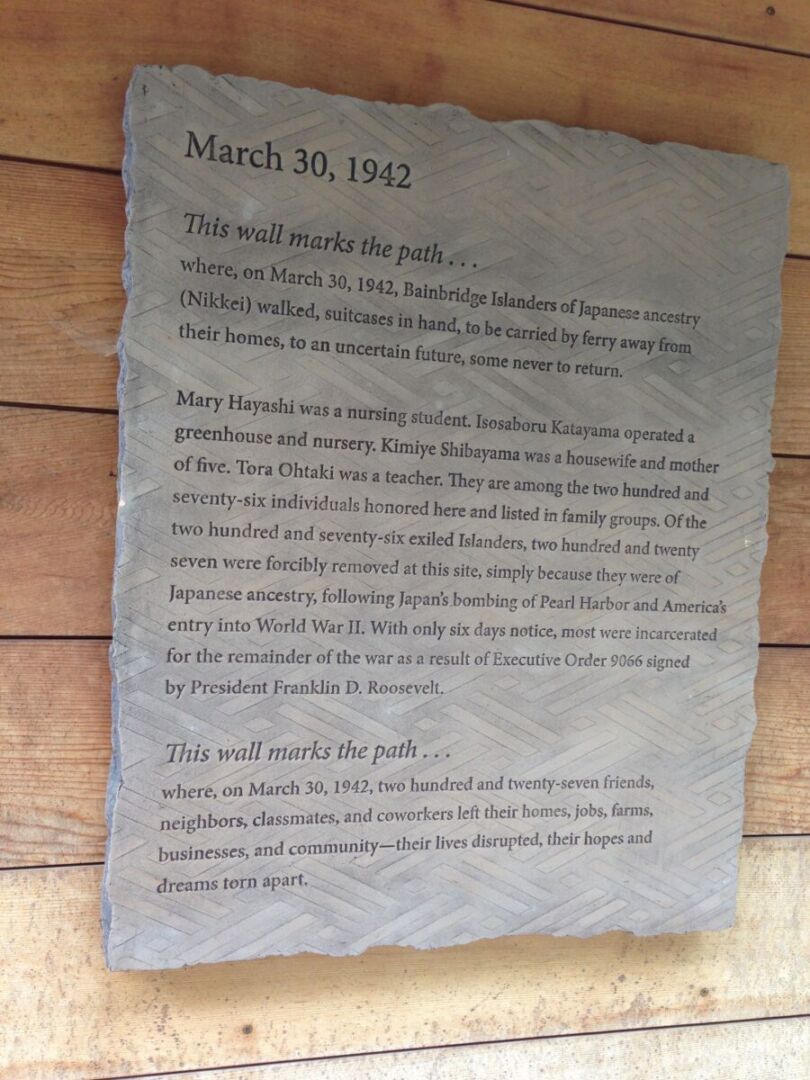
A significant feature of the memorial wall is the honoring of each individual who was incarcerated, with their names hand stamped into clay, providing a personal connection to those who suffered during this dark chapter of history. The wall also incorporates quotes and brief interpretive narratives that further illuminate the broader story of the Japanese American experience during WWII. The ceramic friezes created by Steve Gardner add an artistic dimension to the memorial, enhancing the emotional impact of the visitors' experience. Additionally, tasteful hooks alongside interpretive elements invite visitors to leave behind origami cranes, symbolizing peace and remembrance for those who endured hardship.
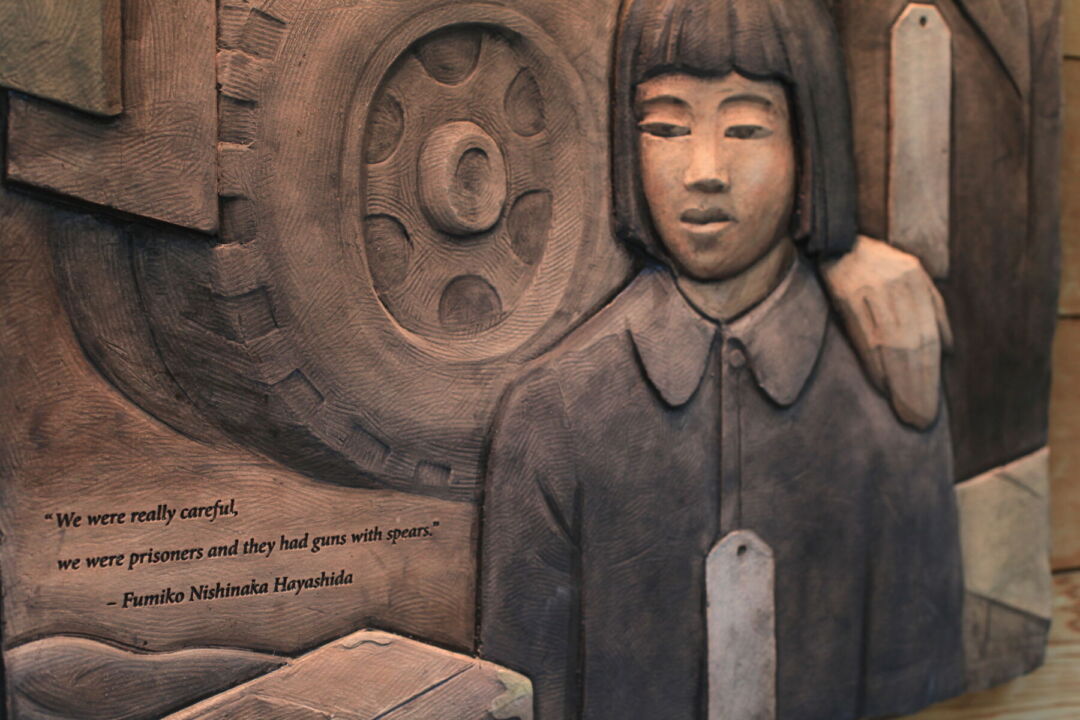
The memorial's recognition as a satellite unit of the Minidoka National Historic Site underscores its importance in preserving history and educating future generations. It serves not only as a memorial but also as a vital educational resource that conveys the lessons of the past. The motto “Nidoto Nai Yoni”—Let it not happen again!—resonates throughout the memorial, urging visitors to reflect on the consequences of exclusion and the importance of community solidarity in the face of injustice.
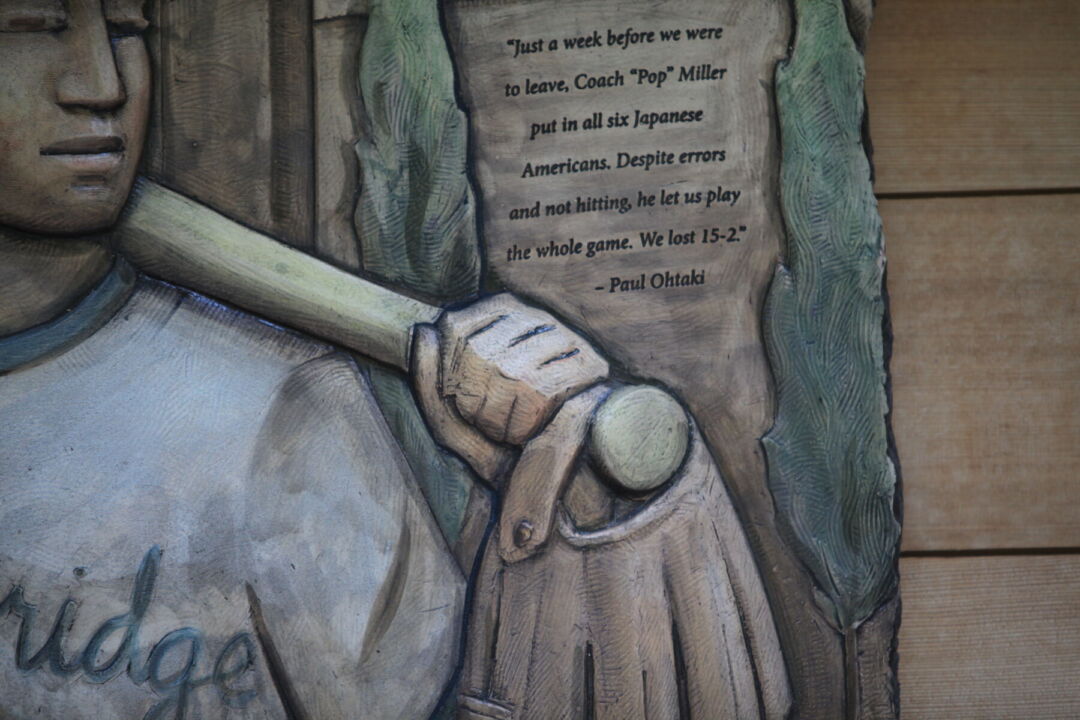
In conclusion, the Bainbridge Island Japanese American Exclusion Memorial is more than just a structure; it is a powerful narrative of resilience, community, and the human spirit. Designed with care and thoughtfulness by EDX Exhibits and their collaborators, it stands as a poignant reminder of the past while instilling hope for future generations. This memorial not only honors those who suffered but also encourages all who visit to remember the lessons of history and strive for a more inclusive and just society.
Read also about the Actrius Catalanes del segle XX - Exhibition in Barcelona project




